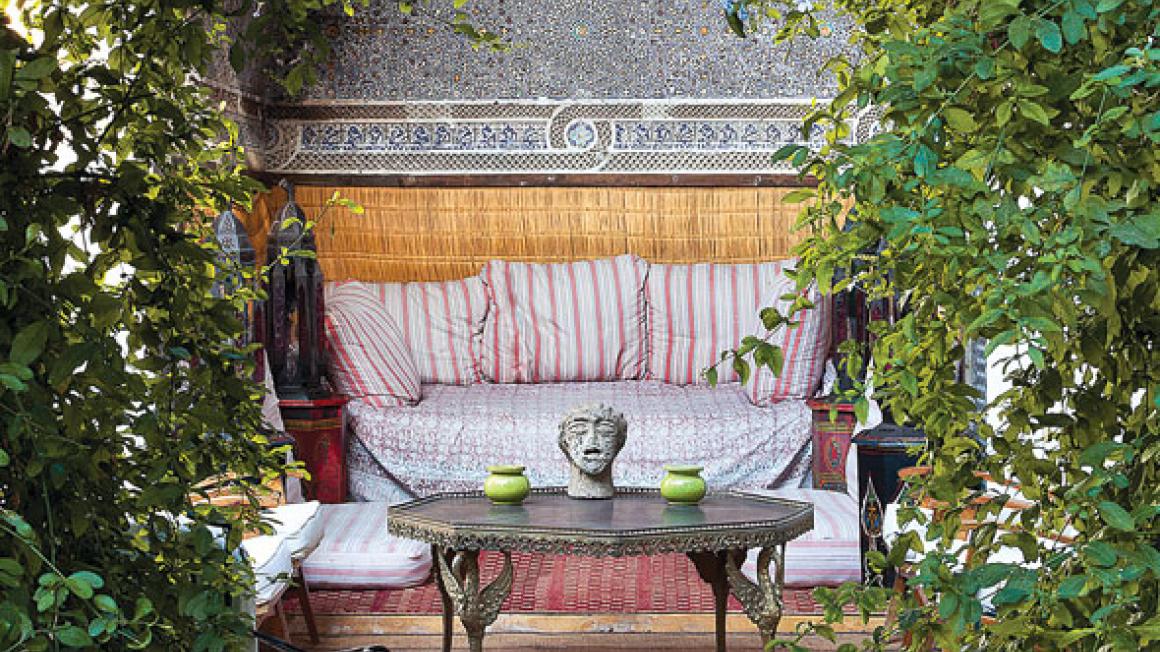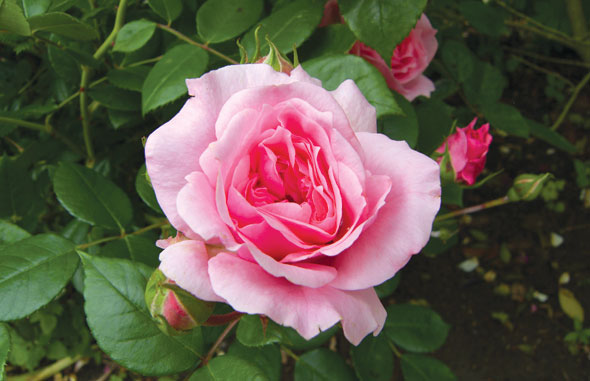Exotic planting
Angelica has been a garden designer with a special interest in the history of gardens. She has a historian’s knowledge of the gardens of Marrakesh, gained since her parents went to live there and introduced her to the city and its green spaces. Her vivid, readable text is illumined with dazzling photographs by Alessio Mei. It is Angelica’s first book and the first book published on the magnificent gardens of this ancient and fascinating city.
In her introduction the author notes that from the start, Marrakesh was conceived as a garden city, with orchards, market gardens and pleasure gardens as part of the urban model.
Characterised by its pink-coloured pisé (rammed earth) architecture, Marrakesh is known as ‘the rose among the palms’. Tourists flock there for the shopping and sunshine, but it is also a cultural destination in which many of the historic sites are inextricable from their gardens. Angelica Gray has chosen 20 gardens, in order of their creation, to seduce the reader with their exotic planting.
She starts with an introduction to the city and its passion for garden making. We learn how Marrakesh was planned as an oasis of green, set with cubes of pink dwellings. She describes the great concentric rings of market gardens and orchards, which have surrounded the city since medieval times, providing a source of fresh food in times of siege. We discover the Medina, the historic city centre within the city walls, built in 1126- 27, and the riads, the houses surrounded by a large planted courtyard garden enclosed on all sides.

We visit first the Agdal, the most important garden in Marrakesh, covering some 500 hectares, created by Sultan Abd el Moumen in 1130-63. It is one of the oldest surviving gardens in the Arabic Islamic world.
The Agdal was designed as a vast royal pleasure garden, divided into large plots arranged in a grid system, with wide paths bordered by single files of olive trees. These areas are subdivided into smaller plots, each planted with a single variety of fruit tree. Water is provided by huge reservoirs, elevated above the garden to supply a gravity-fed irrigation system.
The Agdal is designed to be both useful and to give pleasure to all the senses. It was listed in 1985 as a Unesco World Heritage Site.
Some of the gardens featured are well-known, such as the Jardin Majorelle. It is small but jewel-like, one of the glories of Marrakesh, famous for the striking cobalt blue, which is the defining and unifying element of the garden. It was created by the painter Jacques Majorelle, and rescued after his death, in the 1980s, by French couturier Yves Saint Laurent. The planting is extraordinary, with a Monet-like lily pool set in a bamboo forest.
Some of these beautiful places now house museums; others have become luxury hotels or have been lovingly restored by individual owners. Many of them are open to the public or, in the case of hotels and guest houses, to those who visit the bar or restaurant. Opening times and other details are supplied, along with a glossary, bibliography and useful map.
One garden I particularly loved was that of the Riad Madani, located in the crush of the souks, where road signs are few, but the derb (lane) is distinguishable by a daliya, a trellis covered with a trained grapevine.
Riad Madani is a guest house and only those who stay there have access to this remarkable garden. How easy to decide where to stay!
Gardens Of Marrakesh by Angelica Gray is published by Frances Lincoln, hardback £20: www.franceslincoln.com

A modern twist
The Garden Museum’s new exhibition is on the work of the talented contemporary garden designer Dan Pearson. Accompanying the exhibition, the summer issue of the Garden Museum Journal, titled Dan Pearson: The Making Of A Garden Designer, consists of the transcript of a conversation between Dan and Christopher Woodward, Director of the Museum, inter-cut with photographs, drawings and extracts from notebooks and unpublished diaries and letters.
The story of early influences, his developing appreciation of the significance of place, a passion for plants, and horticultural rigour combined with the painterly quality of his plantings, all come across in the exhibition’s multimedia format. A key element are the specially commissioned films featuring recent projects funded by Dan Pearson Studio. Dan also designed a planting scheme for the Museum’s Long Border, which uses elements of his work at the Tokachi Millennium Forest, a mix of woodland floor species interspersed with Thalictrum ‘Ellin’, and Virginia creeper racing up charred poles.
Green Fuse: The Work Of Dan Pearson runs until 20 October: 020-7401 8865, www.gardenmuseum.org.uk



